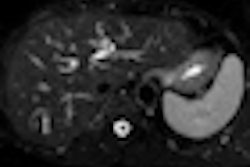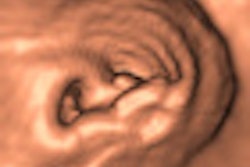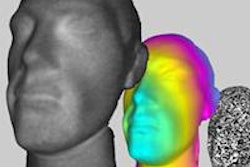
A regional network that links colorectal diagnostic experts is getting underway in Sweden, and researchers have high hopes it will lead to improved quality of radiological reporting in preoperative imaging of colorectal cancer patients, thus providing more patient-oriented care.
Although still in its preliminary phases, the network has enlisted radiologists from a number of institutions in the Stockholm-Gotland region to participate in a collaborative project for reporting of preoperative cross-sectional imaging of patients newly diagnosed with colorectal cancer. Radiologists have access to double-reading and expert consultation via an online server-based platform that connects to each institution's individual RIS/PACS.
An interdisciplinary project, the regional colorectal cancer diagnostic network involves surgeons, radiologists, radiologic technologists, medical students, and project leaders from different information technology fields, said Dr. Lennart Blomqvist, PhD, of Karolinska University Hospital in Stockholm.
Cancer care requires multidisciplinary management and multidisciplinary team conferences that necessitate more and more resources, Blomqvist said.
"This has identified weak links in the radiologic chains, such as access to radiology, the lack of standardized and high-quality reporting, and also the issue that the radiologists at the local hospitals rarely get feedback from expert centers when cases are sent for expert opinion and second-opinion," he said.
Better communication, reporting
An expert radiology network would help to facilitate communication, particularly in double reading, and would potentially decrease the number of tertiary readings, he said. It could also help improve the educational process and enable more fast-tracked reporting and expert consultation.
"Overall, the initiative of the county is to enable more patient-oriented regional quality and resulting in better treatment of diseases that require this kind of cooperation," he said. "[This means] that wherever in the county you go, you get the same kind of evaluation of disease."
One of the four most common cancers, colorectal cancer produces more than 1,000 new cases every year in the Stockholm-Gotland region, which has approximately 2 million inhabitants.
Patients receive a colonoscopy for diagnosis and then biopsy. If rectal cancer is found, they will receive MRI of the pelvis and some will have a transrectal ultrasound. They will be evaluated for distant metastases with a CT of the thorax and abdomen. An increasing number of patients will also have a PET/CT, he said.
Blomqvist discussed the network's early experiences during a scientific session at the ECR 2013 in Vienna.
Expert readers
In this project, the cross-sectional imaging examination will be dealt with by an expert individual who has been rated within the network, Blomqvist said. The researchers sought to assess the effect of the network on the quality of radiological reports performed, as well as to analyze the actual report content and compare the reports with surgical and pathological findings.
The network utilizes an independent server-based platform that can communicate with the individual hospitals' RIS/PACS. The radiologists participating in the network can access the platform from virtually any computer wherever they are, he said.
The project is divided into four phases. In the first phase that began in 2011 and has now been completed, a workshop was given to 20 radiologists from nine hospitals in the Stockholm-Gotland area. The second phase involved integrating the platform with the hospitals' RIS/PACS and educating radiologists on the network's workflow. Two to three radiologists from eight hospitals ultimately decided to join the project, with one hospital electing not to participate for now, he said.
The project is now in this phase, which will include collecting preoperative examinations from 150 colorectal patients.
"The only difference from the ordinary work is that radiologists are reporting within this server-based solution, double reading, and collecting the report," he said. "They also have access to report templates."
After 150 patients are collected, an additional 250 patients will be collected within a regional network in an official training phase. At that point, another 150 patients will be collected in a network during phase four, comparing the reports from this phase to reports gathered in phase two.
"The whole idea behind the network is that you have a common worklist for your dedicated situation," Blomqvist said. "In your area, you have two to three radiologists online all the time with a headset, so you actually have better communication in the region than they would have within their own department."
Early experience
By November 2012, 14 patients from half of the hospitals had been collected for the study. Among those 14 patients, six have been operated on and yielded histopathological data.
In analyzing the radiological report contents for these patients, the researchers noticed the only findings that were consistently reported were the part of the bowel where the tumor was located and the tumor size. Other important aspects concerning staging, such as specified number of suspected metastatic nodes, however, were reported in less than half of the cases.
"So this is far from acceptable and [offers] room for improvement," he said.
With regards to the cases where surgical and histopathological data are available, no evidence has been seen yet that the project has led to overtreatment or undertreatment, he said.
This is an ongoing study and has received a lot of attention in the county from clinics outside that of colorectal cancer and also from noncancer areas, he said.
"The most challenging part of the study so far is to establish the network itself, because it requires a new way of interdisciplinary thinking where you much closer integrate the technical specialties' information technology product leaders into the teams than we are used to doing," Blomqvist concluded. "But we see that this has far more impact as an effort to improve imaging service than anything else we have done so far, especially in terms of unifying standards of examinations and unifying standards of reporting. So we have a lot of hope in the project."



















